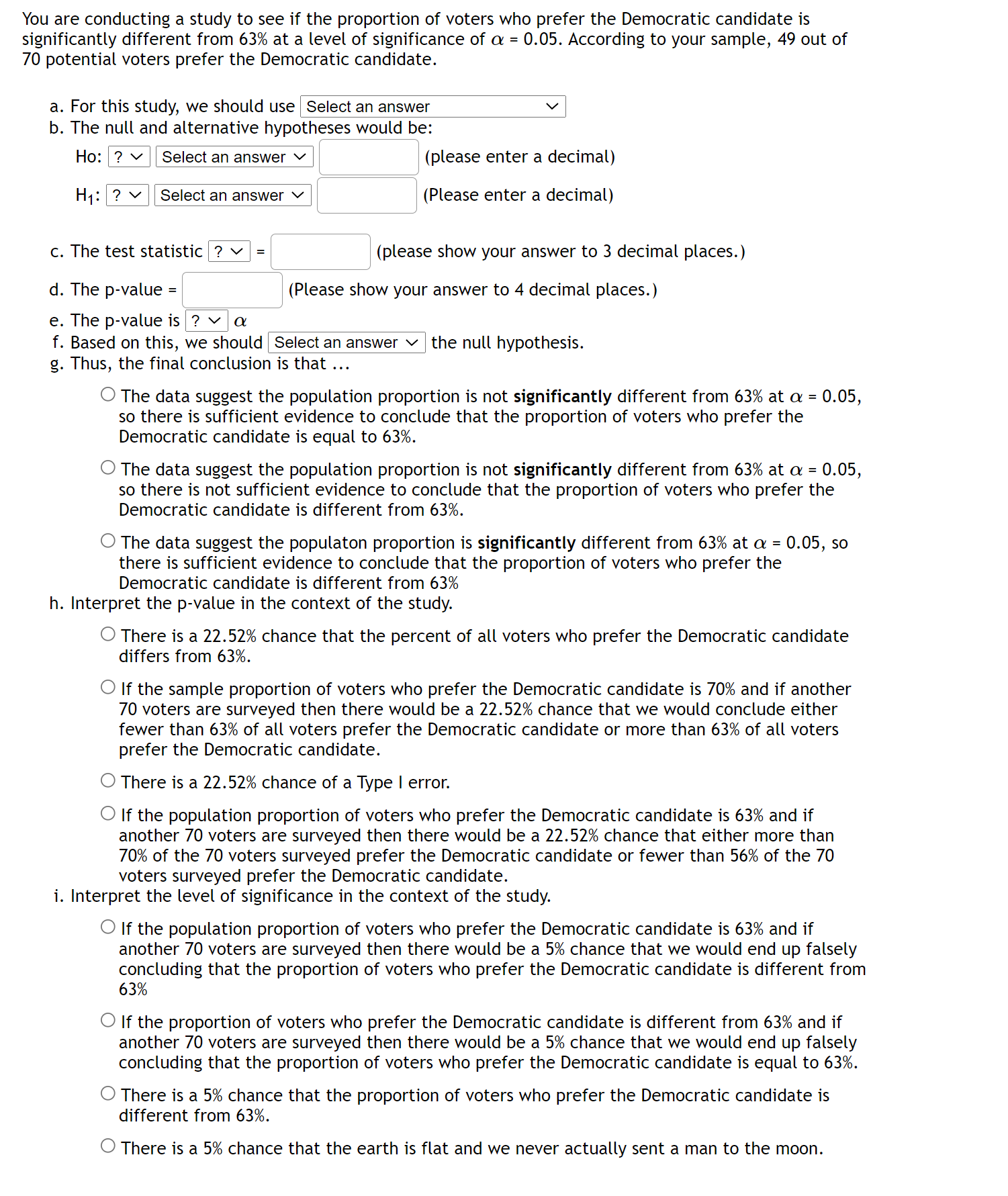You are conducting a study to see if the proportion of voters who prefer the Democratic candidate is significantly different from 63% at a level of significance of a = 0.05. According to your sample, 49 out of 70 potential voters prefer the Democratic candidate. a. For this study, we should use | Select an answer v l b. The null and alternative hypotheses would be: Ho: C] (please enter a decimal) H1: [:] (Please enter a decimal) c. The test statistic = C] (please show your answer to 3 decimal places.) d. The pvalue = C] (Please show your answer to 4 decimal places.) e. The p-value is a f. Based on this, we should the null hypothesis. g. Thus, the final conclusion is that O The data suggest the population proportion is not significantly different from 63% at a = 0.05, so there is sufficient evidence to conclude that the proportion of voters who prefer the Democratic candidate is equal to 63%. O The data suggest the population proportion is not significantly different from 63% at a = 0.05, so there is not sufficient evidence to conclude that the proportion of voters who prefer the Democratic candidate is different from 63%. O The data suggest the populaton proportion is significantly different from 63% at a = 0.05, so there is sufficient evidence to conclude that the proportion of voters who prefer the Democratic candidate is different from 63% h. Interpret the p-value in the context of the study. 0 There is a 22.52% chance that the percent of all voters who prefer the Democratic candidate differs from 63%. 0 If the sample proportion of voters who prefer the Democratic candidate is 70% and if another 70 voters are surveyed then there would be a 22.52% chance that we would conclude either fewer than 63% of all voters prefer the Democratic candidate or more than 63% of all voters prefer the Democratic candidate. 0 There is a 22.52% chance of a Type I error. 0 If the population proportion of voters who prefer the Democratic candidate is 63% and if another 70 voters are surveyed then there would be a 22.52% chance that either more than 70% of the 70 voters surveyed prefer the Democratic candidate or fewer than 56% of the 70 voters surveyed prefer the Democratic candidate. i. Interpret the level of significance in the context of the study. 0 If the population proportion of voters who prefer the Democratic candidate is 63% and if another 70 voters are surveyed then there would be a 5% chance that we would end up falsely concluding that the proportion of voters who prefer the Democratic candidate is different from 63% 0 If the proportion of voters who prefer the Democratic candidate is different from 63% and if another 70 voters are surveyed then there would be a 5% chance that we would end up falsely concluding that the proportion of voters who prefer the Democratic candidate is equal to 63%. Q There is a 5% chance that the proportion of voters who prefer the Democratic candidate is different from 63%. Q There is a 5% chance that the earth is flat and we never actually sent a man to the moon







